Equine Influenza: A Complete Guide to Symptoms, Prevention, and Treatment
Equine influenza stands as one of the most significant respiratory diseases affecting horses worldwide, causing substantial impacts on both individual animals and the broader equine industry. This highly contagious viral infection, often called “horse flu,” can spread rapidly through barns and training facilities, potentially affecting entire herds within days of initial exposure.
Consider this sobering statistic: in unvaccinated populations, equine influenza can affect up to 100% of exposed horses, leading to weeks of lost training time and significant economic consequences for horse owners, trainers, and competition venues. The 2007 outbreak in Australia serves as a stark reminder of the virus’s potential impact, affecting over 76,000 horses across New South Wales and Queensland, and resulting in an estimated economic loss of over one billion dollars.
For horse owners and caretakers, understanding equine influenza isn’t just about preventing a simple cold – it’s about protecting the respiratory health and overall wellbeing of their animals. The virus primarily attacks the respiratory tract, leading to symptoms that can range from mild discomfort to severe illness, particularly in young, elderly, or immunocompromised horses. What makes this disease particularly challenging is its ability to spread through the air, traveling up to 50 meters in favorable conditions, making it difficult to contain once an outbreak begins.
Recent research has shown that while equine influenza continues to evolve, with new strains emerging periodically, proper management and preventive care can significantly reduce both the risk of infection and the severity of symptoms if infection occurs. This comprehensive guide will walk you through everything you need to know about equine influenza, from recognizing the earliest warning signs to implementing effective prevention strategies and providing appropriate care for infected horses.
Whether you’re a professional trainer, competitive rider, or recreational horse owner, understanding equine influenza is crucial for maintaining your horse’s health and protecting your entire stable. As we explore this topic in detail, you’ll learn not only about the scientific aspects of the virus but also practical, actionable steps you can take to safeguard your horses against this challenging disease.
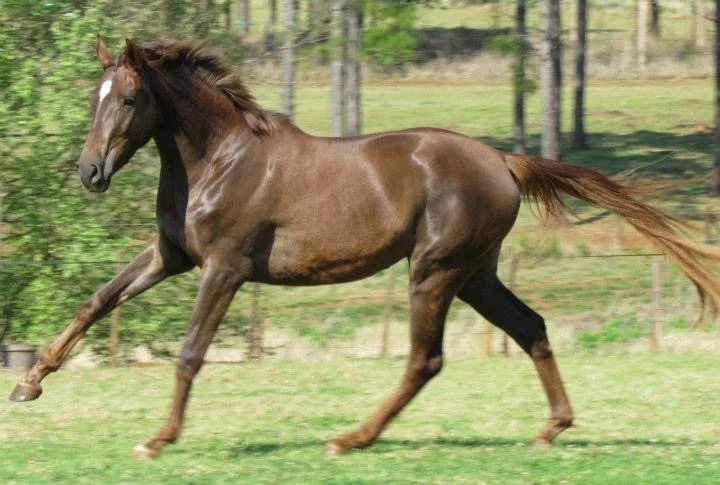
Understanding Equine Influenza
Equine influenza is a viral respiratory disease that specifically targets horses and other equids, such as donkeys and mules. To truly understand this disease, we need to examine its fundamental characteristics, how it operates within the horse’s body, and why it spreads so effectively through equine populations.
The Virus Behind the Disease
At its core, equine influenza is caused by two main types of influenza A viruses: A/equi-1 (H7N7) and A/equi-2 (H3N8). Think of these viruses as specialized invaders that have evolved specifically to infect horses. While A/equi-1 hasn’t been detected in circulation since 1980, A/equi-2 remains the predominant strain affecting horses worldwide. Much like the human flu virus, these equine influenza viruses can mutate and change over time, which explains why vaccines need regular updates to remain effective.
The Infection Process
When a horse encounters the influenza virus, the infection process begins in the respiratory tract. The virus particles attach themselves to the cells lining the horse’s airways, similar to a key fitting into a lock. Once attached, these viruses enter the cells and begin reproducing rapidly. This process damages the protective cells lining the respiratory tract, which normally help keep out harmful bacteria and clear away debris. This damage explains why infected horses often develop secondary bacterial infections during their recovery period.
Why Equine Influenza Spreads So Efficiently
Understanding the transmission of equine influenza helps explain why it spreads so rapidly through horse populations. The virus travels primarily through respiratory droplets, which infected horses release when they cough or exhale. These microscopic droplets can travel up to 50 meters through the air under ideal conditions – imagine the length of a dressage arena. This significant range means that horses don’t need direct contact to become infected.
Several factors contribute to the virus’s efficient spread:
Incubation Period: The time between infection and the appearance of symptoms typically ranges from 1-3 days. During this period, infected horses can shed the virus before showing any signs of illness, unknowingly exposing others.
Environmental Resilience: The influenza virus can survive on surfaces such as water buckets, grooming tools, and even human hands for up to 48 hours. This means the virus can spread not only through direct horse-to-horse contact but also through shared equipment and handlers.
Natural Horse Behavior: Horses are social animals that often gather in groups, share air space in stables, and participate in events where they encounter other horses. This natural behavior creates perfect conditions for virus transmission.
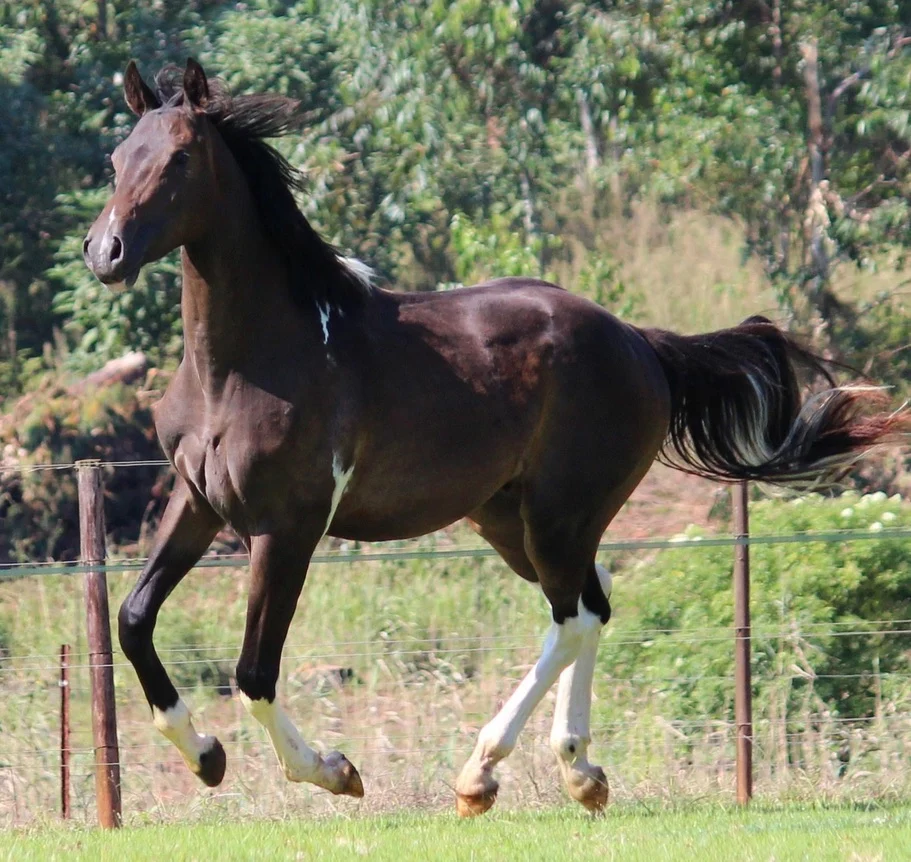
The Impact on the Horse’s Body
When equine influenza infects a horse, it triggers a complex immune response. The horse’s body recognizes the viral invasion and launches defensive measures, leading to inflammation in the respiratory tract. This immune response, while necessary for fighting the infection, actually causes many of the symptoms we associate with flu, such as fever and nasal discharge.
The virus specifically targets and damages the tiny hair-like structures called cilia that line the respiratory tract. These cilia normally work like microscopic escalators, moving debris and mucus out of the airways. When damaged, they can take up to three weeks to regenerate fully, which explains why horses need significant rest time during recovery, even after they appear to be feeling better.
Understanding Risk Factors
Not all horses face the same risk of severe infection. Several factors influence how seriously a horse might be affected:
Age: Young horses (under 5 years) and elderly horses often experience more severe symptoms due to their less developed or aging immune systems.
Previous Exposure: Horses that have never been exposed to the virus or vaccinated against it face the highest risk of severe infection.
Stress Levels: Horses under physical stress from training, competition, or transportation may be more susceptible to infection due to temporarily suppressed immune function.
Environmental Conditions: Poorly ventilated stables, overcrowding, and frequent exposure to new horses all increase the risk of infection and transmission.
This understanding of equine influenza’s nature and behavior forms the foundation for effective prevention and treatment strategies, which we’ll explore in detail in later sections. By recognizing how the virus operates, we can better appreciate why certain preventive measures and management practices are so crucial for protecting our horses.
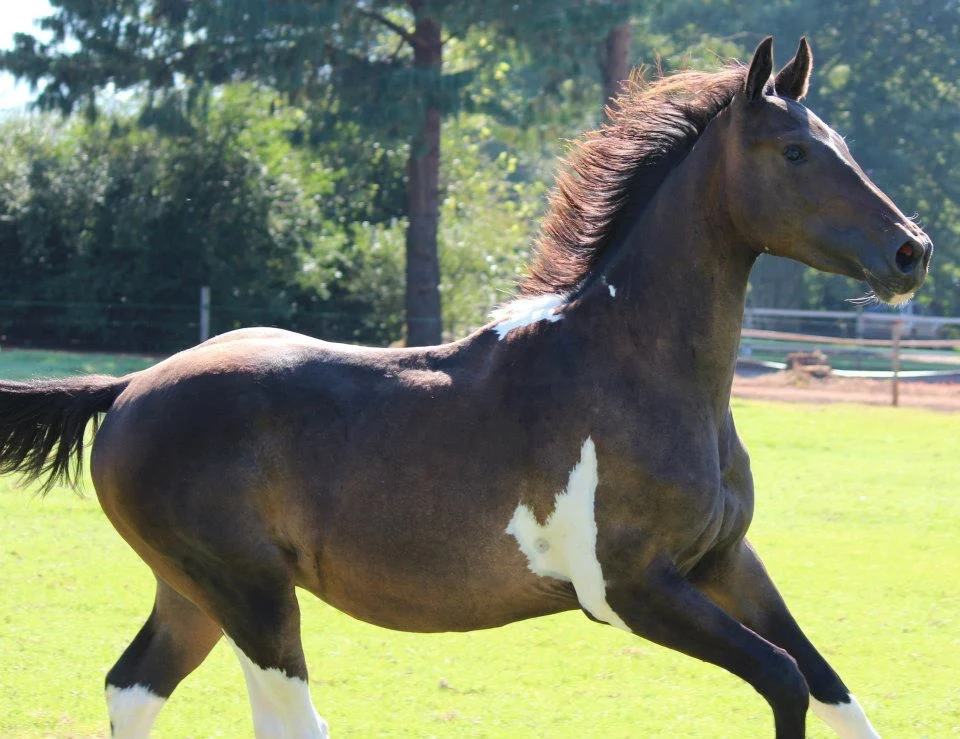
Recognizing the Signs: Equine Influenza Symptoms
Understanding how equine influenza symptoms develop and progress is crucial for early detection and prompt treatment. Like a cascading series of events, symptoms typically appear in a predictable pattern, though their severity can vary significantly between individual horses. Let’s explore how these symptoms typically unfold and what they tell us about the infection’s progression.
Early Warning Signs (Days 1-2)
The first sign that often alerts horse owners to potential influenza infection is a sudden spike in temperature, typically reaching 102.5-105.5°F (39.2-40.8°C). This fever response occurs as the horse’s immune system recognizes and begins fighting the viral invasion. During these early stages, you might notice your horse becoming quieter than usual or showing reduced interest in food – subtle but significant changes in behavior that warrant closer attention.
A dry, harsh cough often develops within the first 24 hours of infection. Think of this cough as the horse’s attempt to clear their irritated airways, much like how we might cough when experiencing a scratchy throat. This cough is particularly noticeable when horses begin exercise or are exposed to dusty environments.
Peak Symptoms (Days 2-4)
As the infection progresses, the initial symptoms intensify, and new signs emerge. The most noticeable developments during this phase include:
Nasal Discharge: What begins as a clear, watery discharge often becomes thicker and more copious over time. This progression reflects the body’s increasing immune response and the accumulation of inflammatory cells in the respiratory tract. Think of it as the horse’s natural cleaning mechanism working overtime to clear the virus.
Depression and Lethargy: Infected horses typically show marked depression and reduced energy levels. You might notice your normally energetic horse standing quietly in their stall, showing little interest in their surroundings. This behavior stems from the body directing energy toward fighting the infection rather than normal activities.
Reduced Appetite: Many horses experience a significant decrease in appetite. This reduction isn’t just about feeling unwell – it’s often related to the fever and general inflammation making eating less comfortable. Some horses may pick at their hay rather than consuming it with their usual enthusiasm.
Muscle Soreness and Stiffness: Horses might show signs of muscle soreness and reluctance to move, similar to how humans feel achy during flu infection. This discomfort results from inflammatory responses throughout the body and can make horses appear stiff or unwilling to exercise.
Advanced Symptoms (Days 4-7)
In severe cases or when complications develop, additional symptoms may appear:
Labored Breathing: Watch for increased respiratory rate and effort. You might notice the horse’s nostrils flaring more than usual or see more pronounced movement of the abdominal muscles during breathing. These signs indicate the horse is working harder to get enough oxygen.
Leg Swelling: Some horses develop mild swelling in their legs, particularly if they’re moving less than usual. This edema occurs due to reduced circulation from inactivity and the body’s inflammatory response.
Signs of Complications
While most cases of equine influenza resolve without serious complications, it’s crucial to watch for signs that might indicate a more severe progression:
Secondary Bacterial Infections: A change in nasal discharge from clear to yellow or green might indicate a secondary bacterial infection has developed.
Persistent Cough: If the cough becomes wetter or persists beyond the expected recovery period, this could signal the development of bronchitis or pneumonia.
Duration and Recovery Indicators
Most horses begin showing improvement within 7-10 days from the onset of symptoms. However, the damaged respiratory tract can take up to three weeks or longer to heal completely. During recovery, watch for these positive signs:
- Return to normal temperature
- Improved appetite and energy levels
- Reduction in cough frequency and severity
- Clearing of nasal discharge
Special Considerations for Different Horse Populations
Young Horses: May show more severe symptoms due to their developing immune systems.
Elderly Horses: Often experience longer recovery periods and may need more intensive supportive care.
Performance Horses: Might show earlier signs of fatigue or reduced performance before other symptoms become apparent.
Pregnant Mares: Require especially careful monitoring as fever can affect fetal development.
Understanding these symptoms and their progression helps horse owners and caretakers make informed decisions about when to seek veterinary care and how to adjust management practices during illness and recovery. Remember that individual horses may show variations in their symptom presentation and recovery timeline, making regular monitoring and documentation essential for proper care.
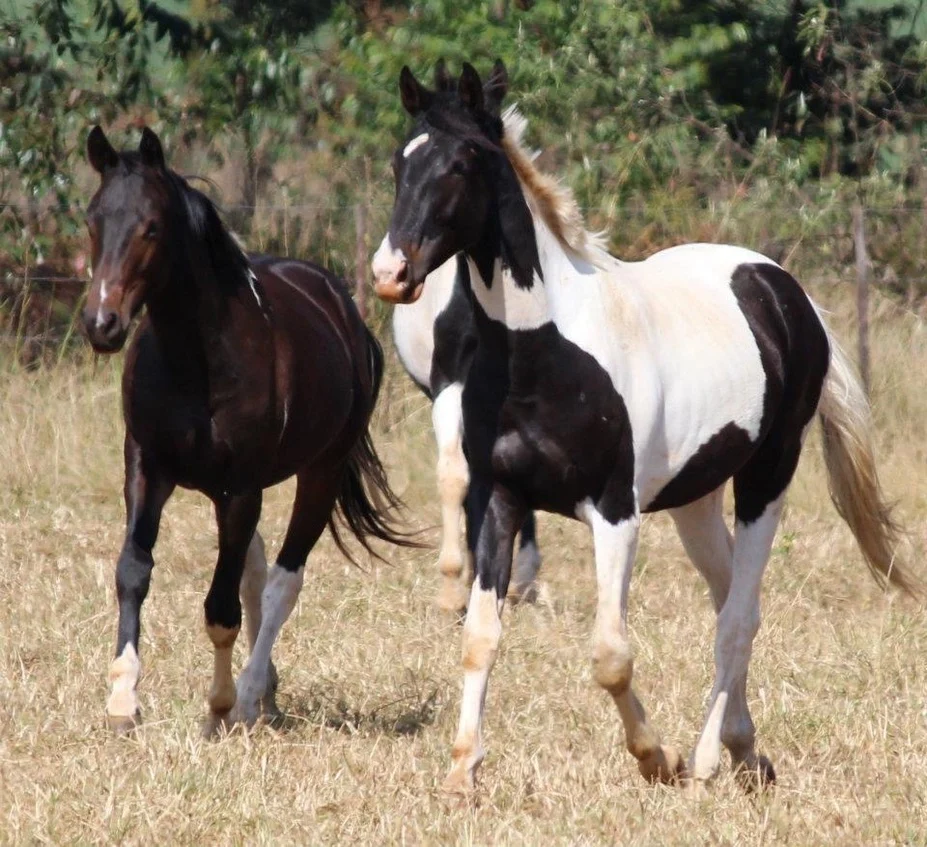
Diagnosis and Testing for Equine Flu
Accurate diagnosis of equine influenza requires a methodical approach combining clinical observation with laboratory testing. Understanding this diagnostic process helps horse owners appreciate why veterinarians follow specific protocols and how different testing methods contribute to a definitive diagnosis.
Clinical Examination
The diagnostic journey typically begins with a thorough clinical examination. Veterinarians start by gathering a detailed history of the horse’s symptoms, recent travel, vaccination status, and potential exposure to other horses. This information provides crucial context for interpreting physical findings and choosing appropriate diagnostic tests.
During the physical examination, veterinarians assess several key indicators:
Temperature Patterns: Fever patterns in equine influenza tend to follow a characteristic biphasic pattern, with temperature spikes occurring around days 1-2 and again around days 3-4. This pattern helps distinguish influenza from other respiratory infections that might show different fever progressions.
Respiratory Assessment: Using a stethoscope, veterinarians listen to the horse’s lungs and upper airway sounds. They’re particularly interested in detecting abnormal sounds like wheezes or crackles, which might indicate inflammation or fluid accumulation in the airways. The veterinarian typically listens at multiple points on both sides of the chest, creating a comprehensive picture of respiratory function.
Laboratory Testing Options
Modern veterinary medicine offers several sophisticated testing methods for confirming equine influenza infection. Each test has specific advantages and optimal timing for use:
Nasal Swabs for PCR Testing: Polymerase Chain Reaction (PCR) testing represents the gold standard for diagnosing active influenza infections. Think of PCR as a highly sensitive detection system that can identify even tiny amounts of viral genetic material. For best results, these swabs should be collected early in the disease process, ideally within the first 48 hours of symptom onset. During collection, the veterinarian gently inserts a sterile swab deep into the horse’s nasal passage, where the virus typically concentrates.
Blood Testing for Antibodies: Blood tests measure the horse’s immune response to the virus by detecting antibodies. These tests typically look for two types of antibodies:
- IgM antibodies indicate recent infection
- IgG antibodies suggest either past infection or vaccination
To get the most accurate picture, veterinarians often recommend paired blood samples taken approximately two weeks apart. A rising antibody level between these samples (known as a “four-fold rise in titer”) provides strong evidence of recent infection.
Rapid Antigen Tests: Similar to rapid flu tests used in human medicine, these provide quick results but may be less sensitive than PCR testing. They work best when used during the first 48 hours of illness when viral shedding is highest. While convenient, negative results might need confirmation through other testing methods if clinical suspicion remains high.
Timing Considerations in Testing
The effectiveness of different diagnostic tests varies depending on when they’re performed relative to symptom onset:
Early Infection (Days 1-3):
- PCR testing is most effective
- Rapid antigen tests show highest accuracy
- Initial blood samples can be drawn to establish baseline antibody levels
Later Infection (Days 4+):
- PCR testing becomes less reliable as viral shedding decreases
- Antibody testing becomes more useful
- Follow-up blood samples can confirm rising antibody levels
Diagnostic Challenges
Several factors can complicate the diagnostic process:
Vaccination History: Recent vaccination can interfere with antibody testing interpretation, as the body produces similar antibodies whether responding to vaccination or natural infection. This is why detailed vaccination records are crucial for accurate diagnosis.
Timing of Sample Collection: The rapid progression of equine influenza means optimal testing windows can be narrow. Samples collected too early or too late might miss the peak period for virus detection.
Sample Handling: Proper collection, storage, and transportation of samples significantly impact test accuracy. Viral samples must be kept at specific temperatures and processed within certain timeframes to maintain their diagnostic value.
Making the Diagnosis
Veterinarians typically consider multiple factors when confirming an equine influenza diagnosis:
- Clinical symptoms and their progression
- Laboratory test results
- Presence of other cases in the area
- Vaccination status and exposure history
- Response to treatment
This comprehensive approach helps ensure accurate diagnosis, which is crucial for:
- Implementing appropriate treatment protocols
- Protecting other horses through proper quarantine measures
- Making informed decisions about rest periods and return to work
- Understanding and managing potential complications
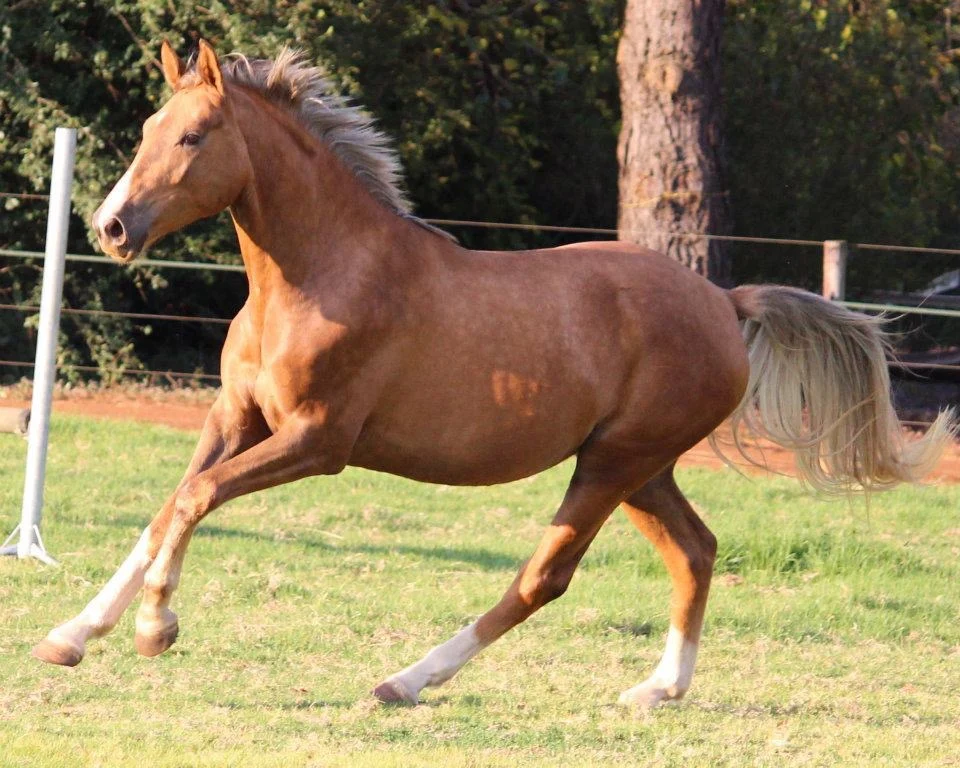
Treatment Protocols for Infected Horses
When treating horses infected with equine influenza, the primary goals are supporting the horse’s immune system, managing symptoms, and preventing complications. Understanding that influenza is a viral infection helps explain why treatment focuses on supportive care rather than trying to eliminate the virus directly – much like human flu, the horse’s body needs to fight off the infection while we provide optimal conditions for recovery.
Rest: The Cornerstone of Recovery
Complete rest stands as the most crucial element of treatment, though it’s often the most challenging for owners to enforce. When we understand how the virus damages the respiratory tract’s protective mechanisms, we can better appreciate why rest is non-negotiable. The microscopic hair-like structures (cilia) lining the airways need time to regenerate, and premature exercise can delay healing and potentially lead to complications.
The rest period should follow this general progression:
- Complete stall rest during the fever phase and for 48-72 hours after the fever subsides
- An additional week of stall rest with hand walking once the horse’s temperature normalizes
- Gradual return to turnout in small, dust-free areas
- Minimum of 21 days before considering any return to work
Environmental Management
Creating an optimal healing environment proves essential for recovery. Think of the horse’s stall as a recovery room that needs specific conditions to promote healing:
Temperature Control: Maintain stable temperatures, avoiding extreme hot or cold conditions that might stress the horse’s system. A well-ventilated environment helps without creating drafts.
Dust Management: Minimizing dust exposure becomes crucial when the respiratory tract is compromised. Consider these practical steps:
- Dampen hay before feeding
- Use dust-free bedding
- Water arena or paddock areas before handling horses
- Clean stalls while the horse is temporarily moved to reduce dust exposure
Supportive Medical Care
While viral infections can’t be treated with antibiotics, several medical interventions help manage symptoms and support recovery:
Anti-inflammatory Medications: Non-steroidal anti-inflammatory drugs (NSAIDs) like phenylbutazone or flunixin meglumine help reduce fever and inflammation. These medications make the horse more comfortable and may encourage them to maintain better appetite and hydration. Your veterinarian will prescribe specific dosages based on your horse’s condition and medical history.
Bronchodilators: In cases where horses show significant respiratory distress, bronchodilator medications might be prescribed to ease breathing. These medications help open airways by relaxing the muscles around the bronchial tubes. Administration typically occurs via inhalers with special equine spacing devices or through oral medications.
Hydration and Nutrition Support
Maintaining adequate hydration and nutrition plays a vital role in recovery:
Water Requirements: Fresh, clean water should always be available. Some horses drink better when water is slightly warmed or when electrolytes are added. Monitor water consumption carefully – a reduced intake might signal a need for additional supportive care.
Nutritional Considerations: Even horses with reduced appetites need proper nutrition to support their immune system. Consider these feeding strategies:
- Offer small, frequent meals rather than large portions
- Provide easily digestible feeds
- Add water to pelleted feeds to create a mash
- Consider supplements designed to support immune function, as recommended by your veterinarian
Monitoring Recovery
Careful monitoring helps track recovery progress and catch potential complications early:
Daily Temperature Checks: Continue twice-daily temperature monitoring until the horse maintains normal temperature (37.5-38.5°C/99.5-101.3°F) for at least three days.
Respiratory Rate and Effort: Monitor breathing rate and watch for signs of increased respiratory effort, which might indicate developing complications.
Appetite and Water Intake: Track food and water consumption as indicators of recovery progress.
Nasal Discharge: Document changes in the amount and character of nasal discharge, noting any changes in color or consistency that might suggest secondary bacterial infection.
Treating Complications
Sometimes, despite best efforts, complications may develop. Common complications requiring additional treatment include:
Secondary Bacterial Infections: If evidence of secondary bacterial infection appears (changed nasal discharge color, persistent fever), your veterinarian might prescribe antibiotics. Understanding that these target the secondary infection, not the virus itself, helps explain their selective use.
Chronic Inflammatory Airway Disease: Some horses develop longer-term respiratory issues requiring ongoing management and possibly additional medications like inhaled corticosteroids.
Special Considerations
Different types of horses may need modified treatment approaches:
Competition Horses: May require longer rest periods before returning to full work, with careful attention to drug withdrawal times if planning to return to competition.
Pregnant Mares: Require careful medication selection and monitoring, as some treatments might affect the developing foal.
Elderly Horses or Those with Pre-existing Conditions: Often need more intensive supportive care and longer recovery periods.
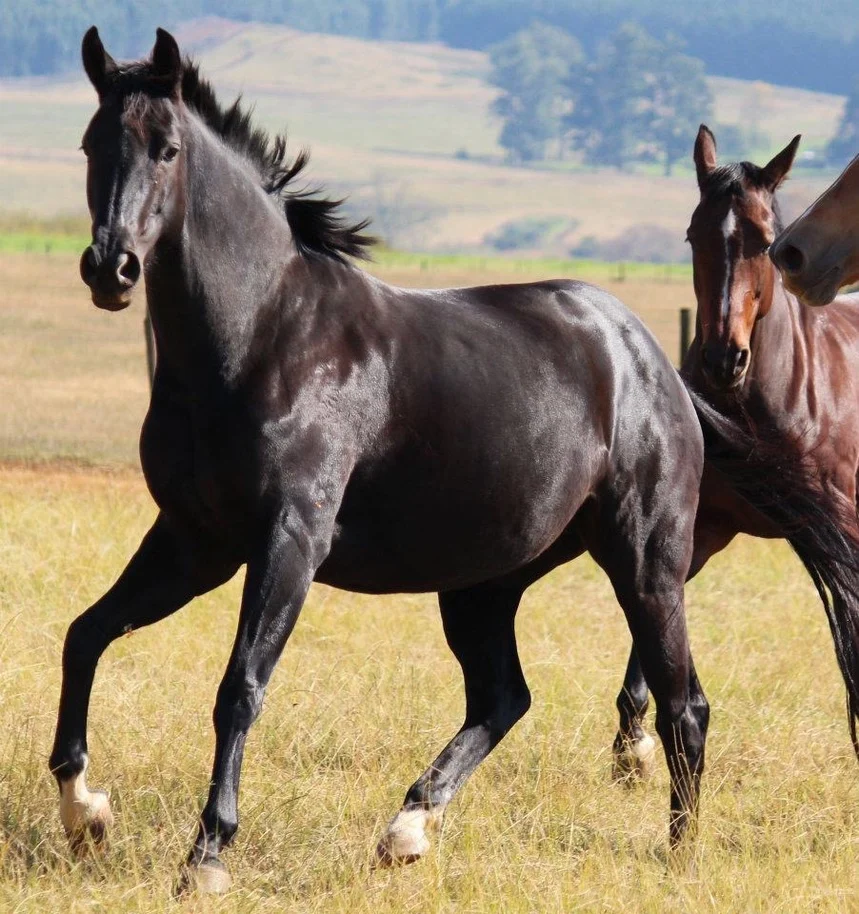
Preventing Equine Influenza: Vaccination and Biosecurity
Prevention of equine influenza relies on two fundamental pillars: a robust vaccination program and comprehensive biosecurity measures. When implemented together, these strategies create multiple layers of protection for both individual horses and entire equine populations.
Understanding Vaccination
Vaccination serves as the primary defense against equine influenza by preparing the horse’s immune system to recognize and fight the virus before exposure occurs. Think of vaccination as a training program for the immune system, teaching it to identify and respond to the influenza virus quickly and effectively.
Vaccination Protocols
The effectiveness of influenza vaccination depends heavily on following appropriate timing and schedules. A typical vaccination program includes:
Initial Vaccination Series (For Previously Unvaccinated Horses): First vaccination introduces the immune system to the virus. The second vaccination, given 3-6 weeks later, reinforces this immune response and establishes stronger protection. This two-step process creates what immunologists call “immune memory,” allowing for faster response to future exposures.
Booster Schedules: Competition horses and those at high risk typically need boosters every 6 months, while horses with lower exposure risk might maintain adequate protection with annual boosters. This difference in scheduling reflects how quickly protective antibody levels can decline in different situations.
Vaccination Timing: Veterinarians often recommend scheduling vaccinations at least two weeks before anticipated high-risk periods, such as competition season or breeding gatherings. This timing allows the immune system to develop optimal protection before potential exposure.
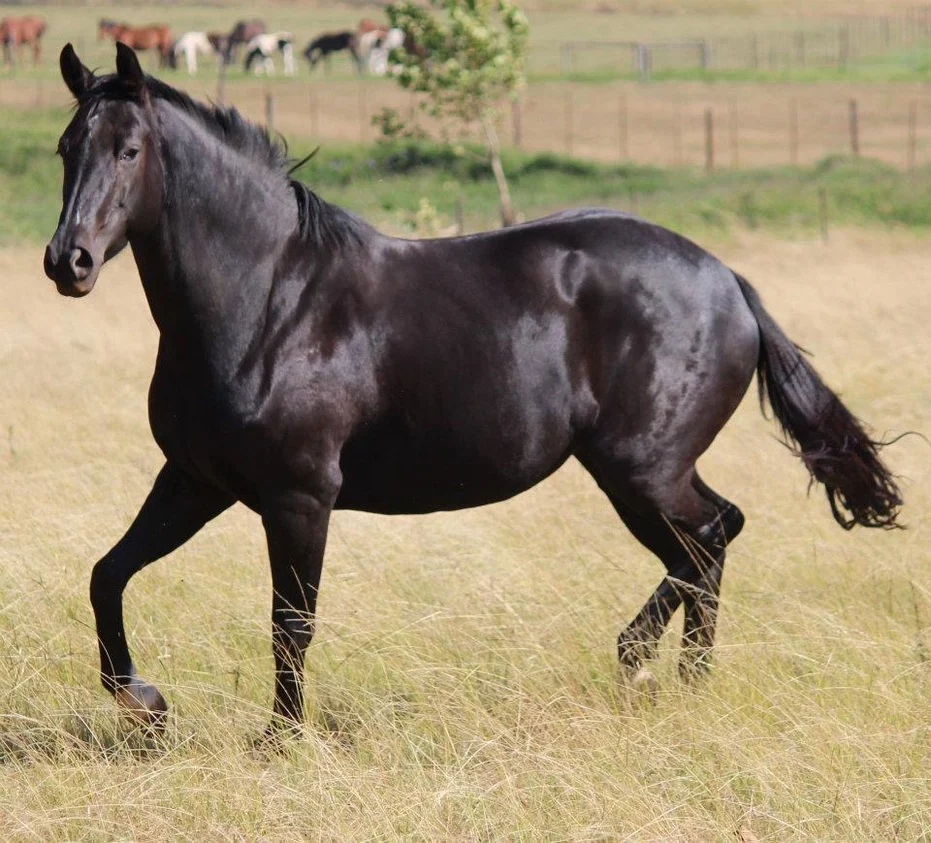
Factors Affecting Vaccine Effectiveness
Several factors influence how well vaccines protect horses:
Vaccine Strain Match: Manufacturers regularly update vaccine strains to match circulating virus variants. This updating process explains why newer vaccines often provide better protection than older formulations.
Individual Horse Factors: Age, overall health, and stress levels can all affect how well a horse responds to vaccination. Young foals, for example, might need modified vaccination schedules due to interference from maternal antibodies.
Environmental Stress: Horses under significant stress from training, competition, or transportation might show reduced vaccine response, necessitating more careful timing of vaccination programs.
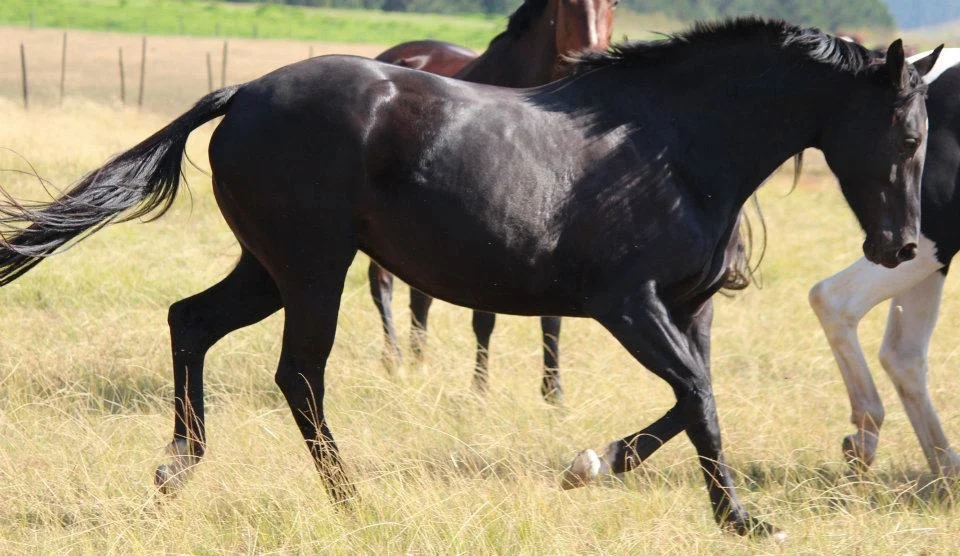
Comprehensive Biosecurity Measures
While vaccination provides internal protection, biosecurity measures create external barriers against virus introduction and spread. A comprehensive biosecurity program includes several key components:
Quarantine Procedures: New arrivals should undergo quarantine for at least 14 days before joining resident horses. This period allows time for any incubating infections to become apparent before exposure to the general population. During quarantine:
- Monitor temperatures twice daily
- Watch for any respiratory symptoms
- Maintain strict separation from resident horses
- Use dedicated equipment and clothing for quarantined horses
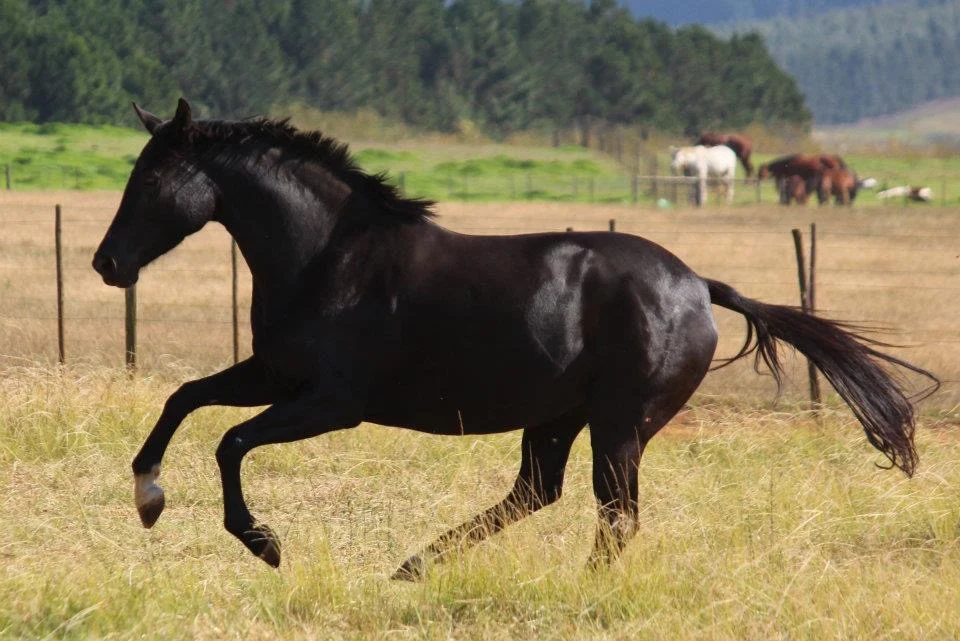
Facility Management:
Stable Design and Ventilation: Good ventilation reduces virus transmission risk by diluting airborne particles. Consider these factors:
- Ensure adequate air exchange without creating drafts
- Maintain appropriate spacing between stalls
- Create isolation areas for sick horses
- Install hand sanitizing stations at key points
Traffic Control: Managing movement patterns helps reduce disease spread:
- Establish designated paths for horse movement
- Create specific areas for visiting horses and trailers
- Limit unnecessary human traffic through stable areas
- Post clear signage about biosecurity protocols
Equipment and Supply Management: Proper handling of equipment significantly reduces cross-contamination risk:
- Assign individual equipment to specific horses
- Regularly clean and disinfect shared equipment
- Store cleaning materials separately from other supplies
- Maintain dedicated sick horse care equipment
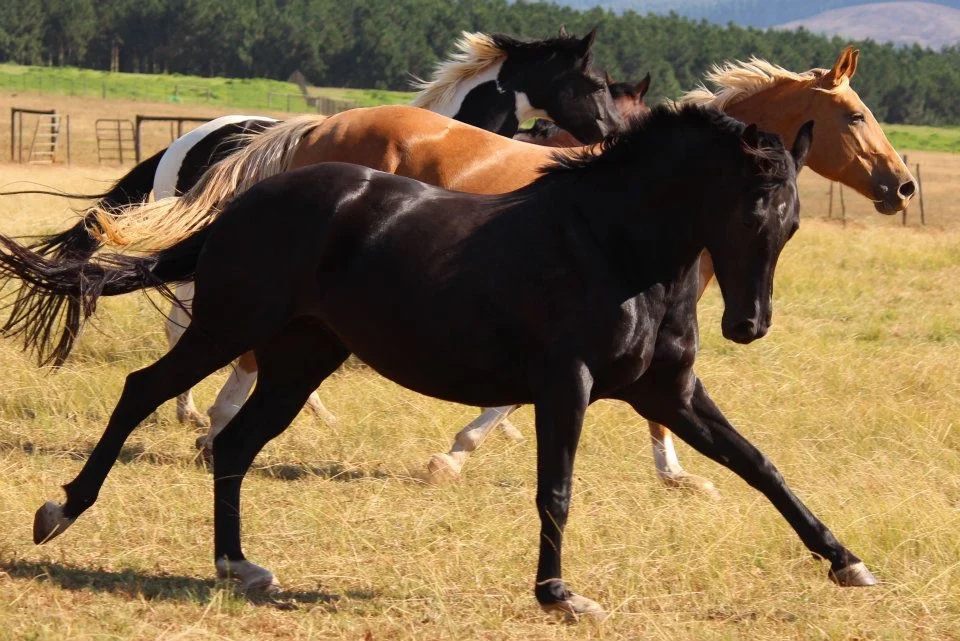
Event and Travel Considerations
Competition and travel present increased risk for influenza exposure. Implement these additional precautions:
Pre-Event Planning:
- Verify vaccination status meets event requirements
- Pack individual equipment for each horse
- Bring separate water buckets and feed containers
- Prepare cleaning and disinfection supplies
During Events:
- Minimize contact between horses
- Avoid sharing equipment with other stables
- Monitor horses closely for early signs of illness
- Clean and disinfect stalls before use
Post-Event Procedures:
- Clean all equipment thoroughly before returning to home stable
- Monitor horses closely for several days after return
- Consider brief isolation period for returning horses
- Document any concerning symptoms

Staff Training and Compliance
The success of prevention programs depends heavily on consistent implementation:
- Provide regular training on biosecurity procedures
- Create clear, written protocols for all routine activities
- Maintain logs for cleaning and monitoring activities
- Regular review and updates of procedures based on current best practices
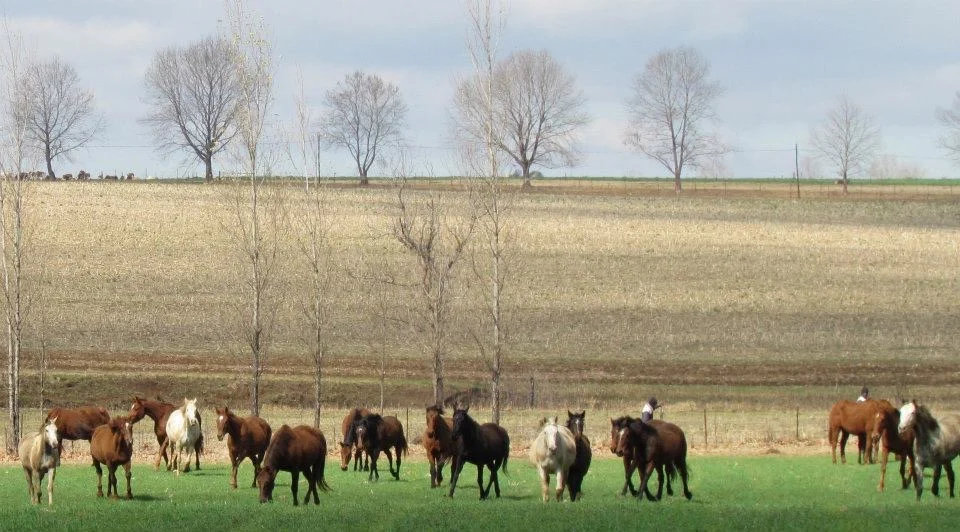
Risk Factors and High-Risk Populations
Understanding which horses face higher risks of contracting equine influenza helps owners and caretakers implement appropriate preventive measures. Much like a chain where each link represents a potential vulnerability, multiple factors can combine to increase a horse’s susceptibility to infection or likelihood of experiencing more severe symptoms.
Age-Related Risk Factors
Young Horses (Under 5 Years): Young horses face increased vulnerability for several biological reasons. Their immune systems are still developing, much like a city building its defensive walls. While they possess some natural immunity inherited from their mothers through colostrum, this protection begins fading around 6 months of age. During this critical period, young horses must develop their own immune responses through either natural exposure or vaccination.
The challenge young horses face becomes particularly evident in training and competition environments. When young horses enter training, they often experience multiple stressors simultaneously: separation from familiar companions, new environments, physical demands of training, and exposure to other horses. This combination creates what we might call a “perfect storm” of vulnerability.
Elderly Horses (Over 15-20 Years): Senior horses face different challenges related to immunosenescence – the natural aging of the immune system. Think of an aging immune system like a security force that’s becoming less efficient at identifying and responding to threats. These horses often take longer to mount an effective immune response and may experience more severe symptoms when infected.
Additionally, older horses frequently have other health conditions that can complicate their response to infection:
- Cushing’s Disease (PPID) affects immune function
- Chronic respiratory conditions may worsen during infection
- Reduced ability to maintain body condition during illness
Performance and Competition Factors
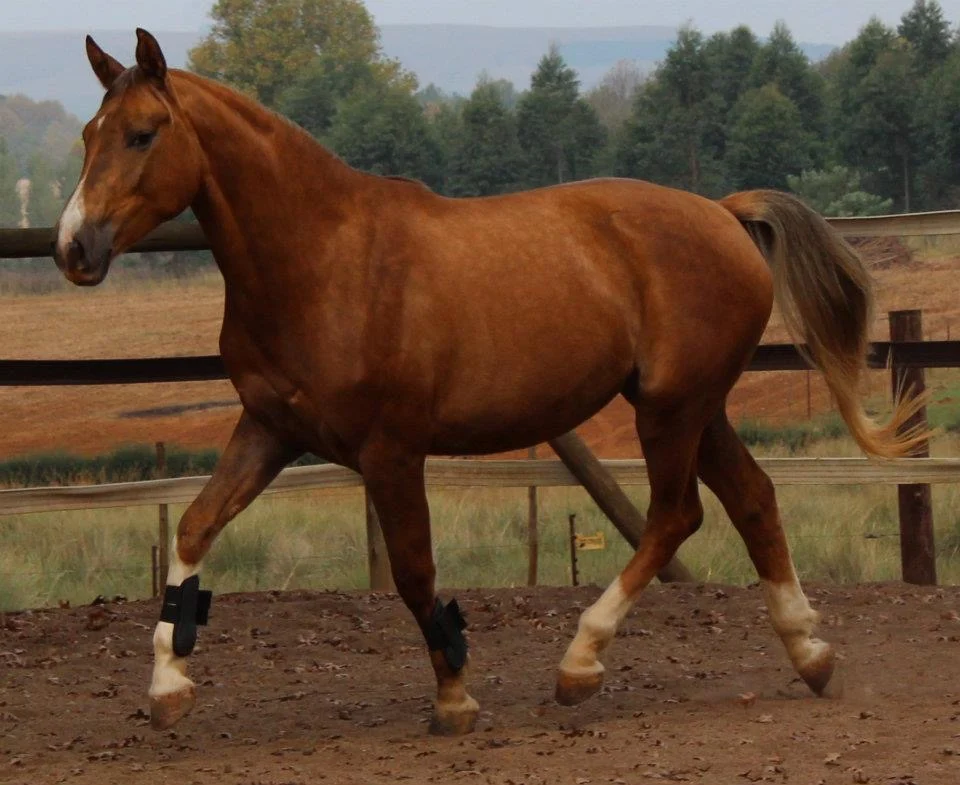
Competition horses face unique risks due to several interconnected factors:
Physical Stress: The intensive training required for competition can temporarily suppress immune function. This suppression occurs because the body diverts resources toward supporting physical performance rather than maintaining peak immune readiness. The effect becomes more pronounced during competition seasons when training intensity increases.
Travel Stress Frequent transportation creates multiple risk factors:
- Elevated stress hormones affecting immune function
- Extended periods with raised head position affecting respiratory clearance
- Exposure to varying environmental conditions
- Contact with new horses at competition venues
Environmental Exposure Competition environments create perfect conditions for virus transmission:
- Large gatherings of horses from different locations
- Shared airspace in temporary stabling
- Common water sources and equipment
- High-traffic areas where horses congregate
Management and Housing Risks
Stable Environment Housing conditions can significantly impact disease susceptibility:
- Poor ventilation allows viral particles to concentrate in the air
- Overcrowding increases exposure risk
- Dusty conditions irritate respiratory tracts
- Fluctuating temperatures stress immune systems
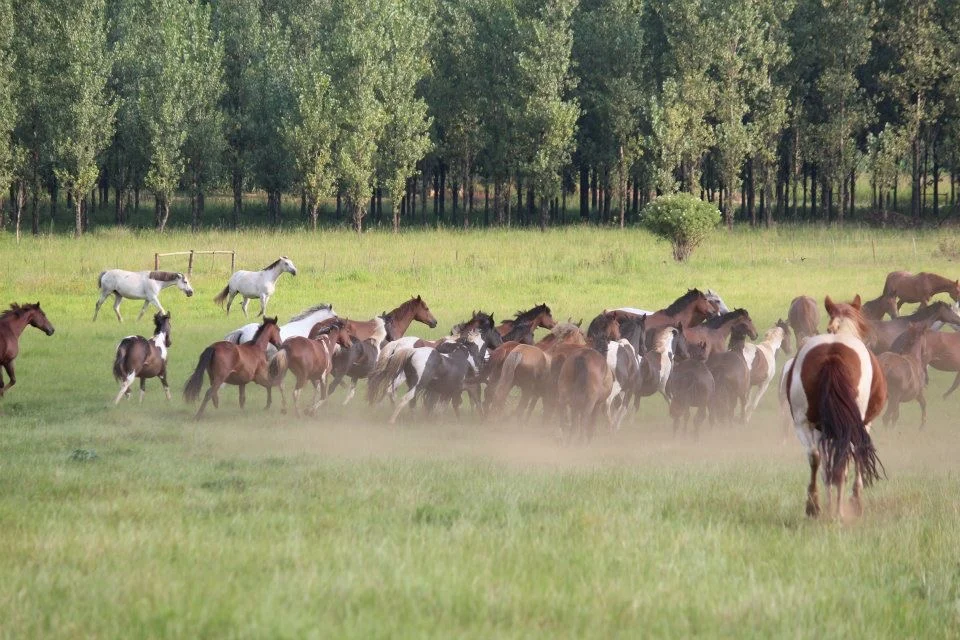
Social Structure: The way horses are managed socially affects their risk level:
- Frequent introduction of new horses
- Large group sizes
- Mixing of horses from different age groups
- Regular exposure to traveling horses
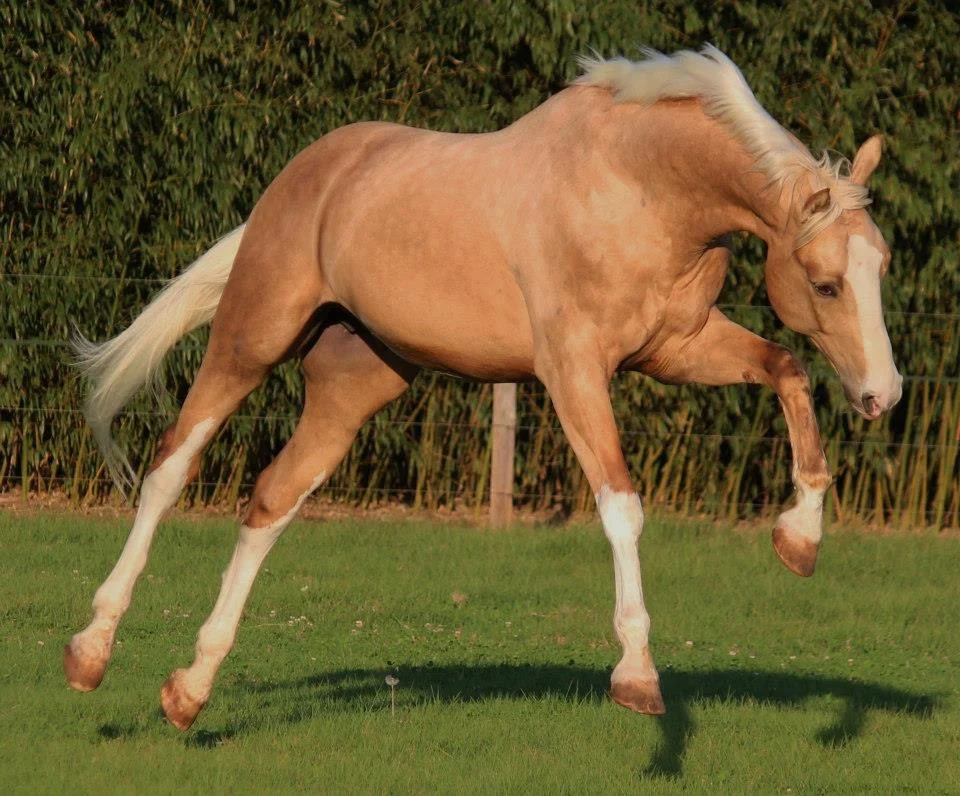
Health Status Considerations
Previous Respiratory Issues Horses with a history of respiratory problems face increased risk because:
- Compromised respiratory defenses
- Reduced ciliary clearance
- Greater susceptibility to secondary infections
- Longer recovery periods when infected
Vaccination Status Inadequate vaccination creates vulnerability through:
- Incomplete immune protection
- Delayed immune response
- Reduced ability to fight off infection
- Greater risk of severe symptoms
Managing High-Risk Populations
Understanding these risk factors allows for targeted management strategies:
For Young Horses:
- Carefully planned vaccination programs
- Gradual introduction to new environments
- Reduced exposure to traveling horses
- Extra attention to stress reduction during training
For Competition Horses:
- Strategic vaccination timing around competition schedule
- Enhanced biosecurity during travel
- Regular health monitoring
- Careful management of training intensity
For Elderly Horses:
- More frequent health assessments
- Modified vaccination schedules if needed
- Extra attention to environmental conditions
- Prompt response to early warning signs
Recovery and Return to Work
The recovery period and subsequent return to work following equine influenza represent critical phases that directly impact both immediate and long-term horse health. Understanding the healing process helps explain why rushing recovery can lead to complications, while a methodical return to work supports lasting respiratory health.
Understanding the Recovery Timeline
Recovery from equine influenza involves more than just waiting for obvious symptoms to disappear. The respiratory system undergoes a complex healing process that occurs in distinct phases. Think of it like repairing a damaged road – even after the surface looks smooth, the underlying structure needs time to fully stabilize.
The healing process typically follows this pattern:
Initial Recovery Phase (Days 1-7) During this period, the horse’s body actively fights the viral infection. The immune response creates inflammation in the airways, similar to how a sprained ankle swells as part of the healing process. During this phase, complete rest allows the body to direct all energy toward fighting the infection rather than supporting physical activity.
Repair Phase (Days 8-21) Even after obvious symptoms subside, the respiratory tract continues repairing itself. The microscopic hair-like structures (cilia) that help clear debris from the airways regenerate during this time. Think of these cilia like tiny escalators moving mucus and particles out of the lungs – they need time to rebuild and resume their protective function.
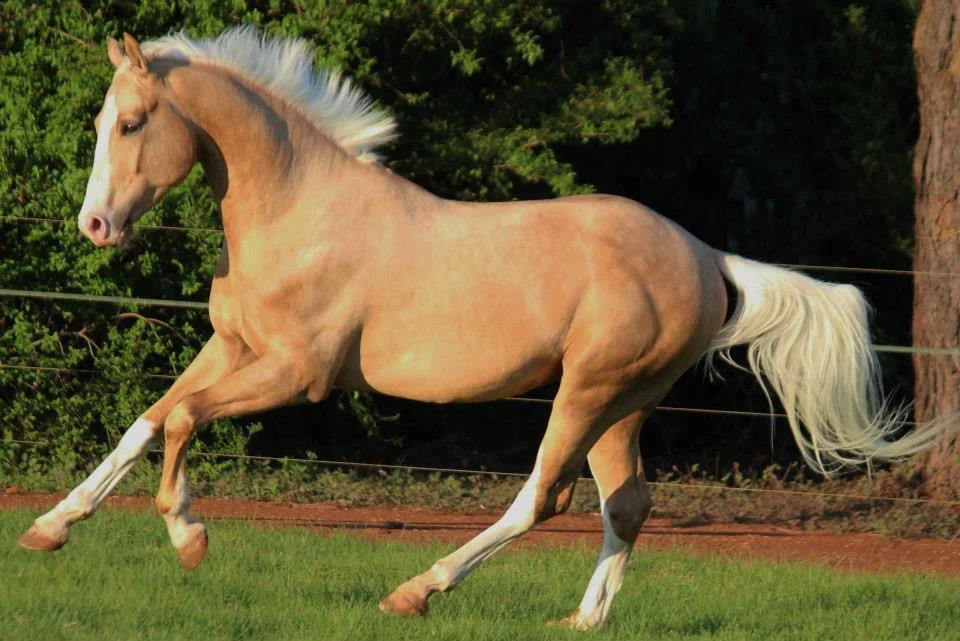
Monitoring Recovery Progress
Before considering any return to work, evaluate these key indicators:
Temperature Patterns
- Normal temperature (37.5-38.5°C/99.5-101.3°F) for at least 7 days
- No fever spikes even with mild exercise
- Consistent readings morning and evening
Respiratory Function
- Normal breathing rate at rest (8-12 breaths per minute)
- No increased respiratory effort
- Clear airway sounds on veterinary examination
- Resolution of cough and nasal discharge
General Health Indicators
- Return to normal appetite and water consumption
- Bright, alert demeanor
- Normal energy levels during turnout
- Good body condition maintenance
Structured Return to Work Program
Once your veterinarian confirms adequate recovery, follow a systematic approach to resuming exercise. Think of this like physical therapy after an injury – each stage builds gradually on the previous one.
Week 1: Initial Movement
- Hand walking: 10-15 minutes twice daily
- Turnout in small, dust-free paddock
- Monitor breathing rate during and after activity
- Watch for any return of symptoms
Week 2: Light Exercise
- Increase hand walking duration to 20-30 minutes
- Begin short periods of trotting in-hand if breathing remains normal
- Continue monitoring respiratory recovery after exercise
- Maintain turnout schedule in appropriate conditions
Week 3: Controlled Riding
- Start with 15-20 minute walking rides
- Gradually introduce short trot periods
- Keep work straight and simple
- Avoid deep footing or dusty conditions
Week 4: Progressive Training
- Extend riding sessions to 30-40 minutes
- Include longer trot periods
- Begin incorporating some canter work
- Start reintroducing normal training patterns
Special Considerations for Different Disciplines
Performance Horses: These athletes require particularly careful management during return to work:
- More gradual progression through exercise phases
- Regular veterinary assessments of respiratory function
- Careful monitoring of performance indicators
- Extended timeline before returning to competition intensity
Pleasure Horses: While these horses might not need the same level of fitness, they still benefit from a structured return:
- Focus on building general conditioning
- Maintain flexibility in exercise progression
- Emphasize comfort and confidence
- Allow extra time if needed between stages
Signs to Monitor During Return to Work
Watch carefully for these warning signs that might indicate the need to adjust the program:
- Increased respiratory rate that doesn’t return to normal within 15-20 minutes
- Return of coughing during exercise
- Unusual fatigue or lack of energy
- Any nasal discharge during or after work
Long-term Management Considerations
After returning to full work, maintain awareness of respiratory health:
- Schedule regular veterinary check-ups
- Monitor ongoing performance levels
- Maintain appropriate vaccination protocols
- Consider seasonal factors that might affect respiratory function
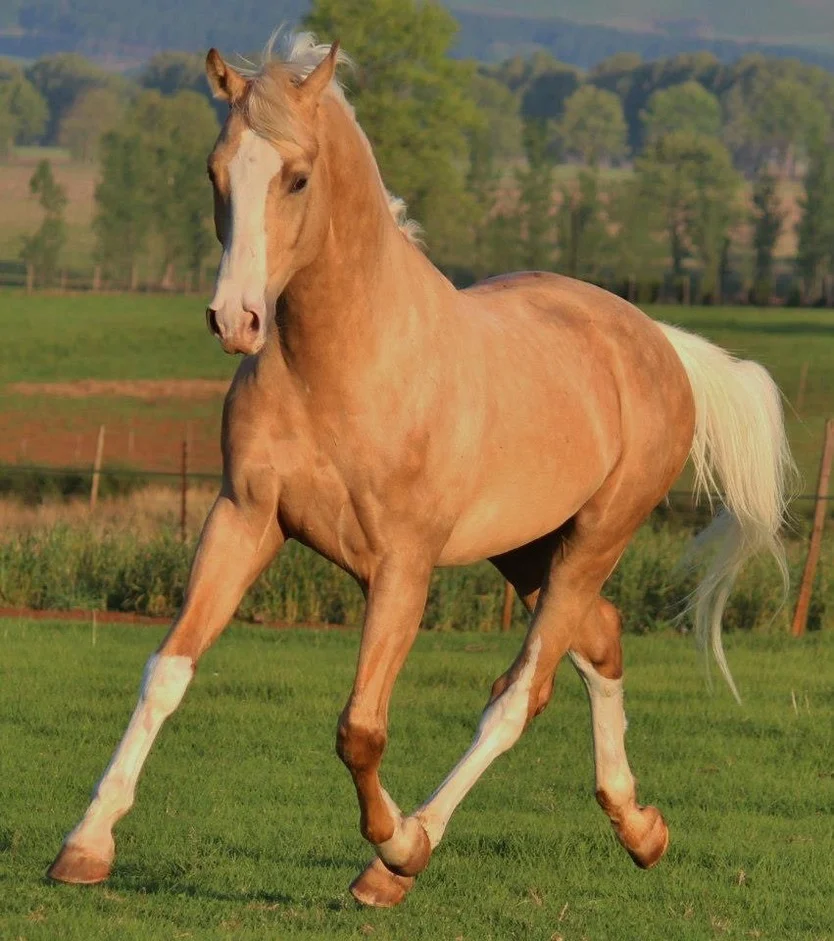
Long-term Management Strategies
Successfully managing equine influenza over the long term requires a comprehensive approach that goes beyond just responding to outbreaks. Think of it as creating a protective ecosystem around your horses, where each management strategy reinforces the others to create multiple layers of defense against future infections.
Vaccination Program Optimization
Creating an effective long-term vaccination strategy requires understanding how immune protection develops and wanes over time. Consider your horse’s vaccination program as an ongoing process rather than a series of isolated events. Regular communication with your veterinarian helps ensure your program adapts to changing risks and circumstances.
Key elements of a sustainable vaccination program include:
Annual Risk Assessment: Just as we adjust our training programs based on performance goals, vaccination schedules should adapt to changing circumstances. Consider how your horse’s risk factors might change throughout the year:
- Competition schedules and travel plans
- Changes in the local horse population
- Seasonal variations in exposure risk
- Updates in vaccine formulations to match circulating strains
Documentation and Record-Keeping: Maintaining detailed health records serves as your horse’s medical biography, helping identify patterns and optimize timing of preventive care. Track important details such as:
- Vaccination dates and specific products used
- Any reactions or concerns following vaccination
- Changes in exposure risk or management
- Results of any titer testing or immune status checks
Facility Management Excellence
Think of your stable environment as your horse’s primary defense against disease exposure. Just as we carefully manage training surfaces to prevent injury, we must maintain optimal stable conditions to support respiratory health.
Ventilation Optimization: Understanding airflow patterns in your stable helps maintain healthy respiratory conditions. Picture air movement like water flowing through a system – it should move smoothly without creating stagnant areas or harmful drafts. Consider these factors:
- Install and maintain proper ventilation systems
- Position stalls to maximize natural airflow
- Monitor air quality regularly, especially in enclosed spaces
- Adjust ventilation based on weather conditions and season
Dust Control Protocols: Minimizing respiratory irritants requires consistent attention to multiple sources of dust:
- Use dust-free bedding materials
- Implement proper storage and handling of hay and feed
- Maintain riding surfaces with appropriate moisture content
- Consider using feed alternatives that produce less dust
Staff Training and Protocol Development
Creating a culture of prevention among all caretakers ensures consistent implementation of protective measures. Think of this as developing a team approach to horse health, where everyone understands their role in maintaining protective practices.
Educational Components:
- Regular updates on disease prevention protocols
- Hands-on training in proper cleaning and disinfection
- Recognition of early warning signs
- Emergency response procedures
Standard Operating Procedures: Develop clear, written protocols for routine activities that affect disease prevention:
- Daily cleaning and disinfection routines
- Proper handling of new arrivals
- Visitor policies and access restrictions
- Equipment cleaning and maintenance schedules
Health Monitoring Systems
Implementing systematic health monitoring helps identify potential problems before they become serious issues. Think of this as creating an early warning system for your stable.
Daily Monitoring Practices:
- Regular temperature checks for at-risk horses
- Observation of eating and drinking patterns
- Assessment of general demeanor and energy levels
- Documentation of any respiratory symptoms
Seasonal Considerations: Understanding how different seasons affect respiratory health allows for proactive management:
Spring and Summer:
- Increased ventilation during hot weather
- Dust management during dry periods
- Modified turnout schedules to avoid peak pollen times
- Attention to air quality during high humidity
Fall and Winter:
- Balanced ventilation without creating drafts
- Moisture control in enclosed spaces
- Modified exercise programs for cold weather
- Special attention to new arrivals during peak respiratory season
Emergency Preparedness
Developing comprehensive emergency plans helps ensure quick, effective response to disease outbreaks. Consider this your stable’s insurance policy against worst-case scenarios.
Key Components of Emergency Planning:
- Isolation protocols for sick horses
- Communication procedures for owners and veterinarians
- Supply stockpiles for emergency situations
- Clear chain of command for decision-making
Regular Review and Updates:
- Assess effectiveness of current procedures
- Incorporate new research and recommendations
- Update protocols based on experience
- Maintain current contact lists and resources
Building Resilience Through Stress Management
Understanding how stress affects immune function helps create management practices that support overall health:
- Develop consistent daily routines
- Provide appropriate social interaction
- Balance work and rest periods
- Maintain stable environmental conditions
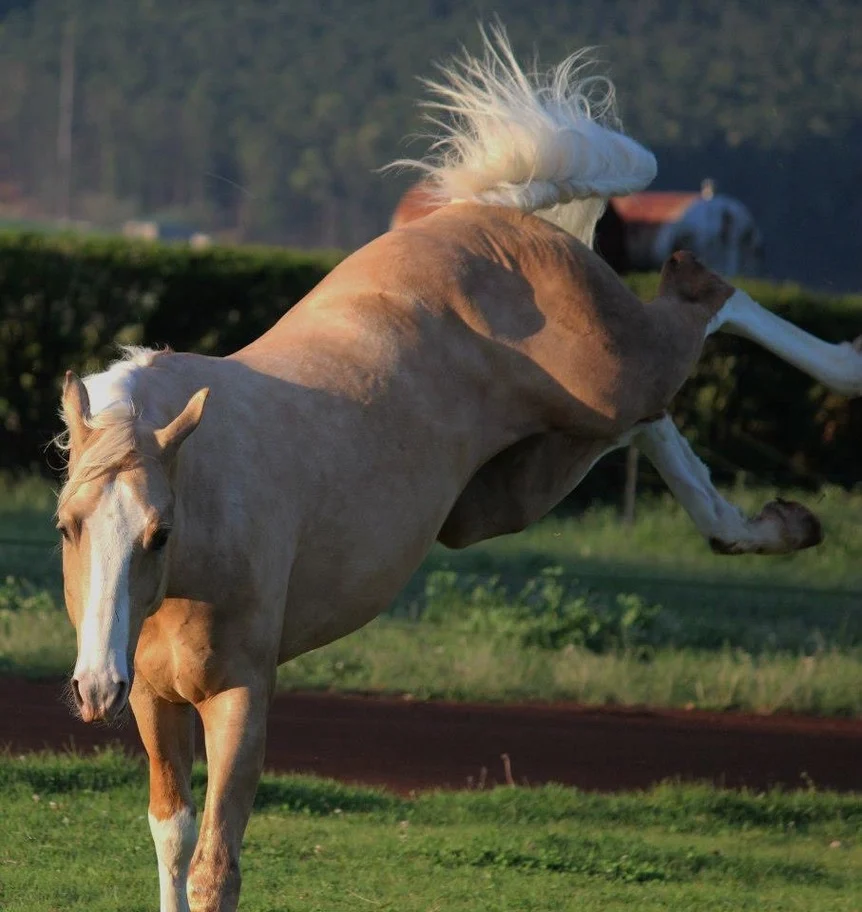
Conclusion
Understanding and managing equine influenza represents a crucial aspect of responsible horse care that extends far beyond simply responding to outbreaks. As we’ve explored throughout this comprehensive guide, the complex nature of this respiratory disease demands a thoughtful, proactive approach that combines scientific understanding with practical management strategies.
The impact of equine influenza reaches beyond individual horses to affect entire equine communities. When we understand how the virus spreads, recognize early warning signs, and implement effective prevention strategies, we create stronger protective networks that benefit all horses in our care. This knowledge becomes particularly valuable when we consider how quickly the virus can spread through susceptible populations and the significant recovery time required for affected horses.
Prevention remains our most powerful tool against equine influenza. Through proper vaccination protocols, robust biosecurity measures, and careful management of risk factors, we can significantly reduce the likelihood of infection. However, this prevention requires constant vigilance and a thorough understanding of how various factors – from environmental conditions to stress levels – influence our horses’ susceptibility to infection.
The recovery process, while sometimes challenging, teaches us valuable lessons about the delicate balance between rest and rehabilitation. By respecting the time needed for full respiratory healing and following structured return-to-work protocols, we not only support our horses’ immediate recovery but also protect their long-term respiratory health and athletic potential.
Looking ahead, staying informed about evolving research, updated vaccination protocols, and emerging management strategies helps us continue refining our approach to equine influenza prevention and treatment. Each advancement in our understanding contributes to better outcomes for infected horses and more effective prevention strategies for those at risk.
Remember, successful management of equine influenza requires a community effort. Whether you manage a large competition yard or care for a single pleasure horse, your understanding and implementation of proper prevention protocols contributes to the broader health of the equine community. By staying informed, maintaining open communication with veterinary professionals, and implementing comprehensive management strategies, we create stronger shields against this challenging disease.
Take the first step toward enhanced protection for your horses by implementing the strategies we’ve discussed and staying connected with the latest developments in equine respiratory health. Your commitment to understanding and managing equine influenza not only protects your own horses but contributes to the wellbeing of horses everywhere.
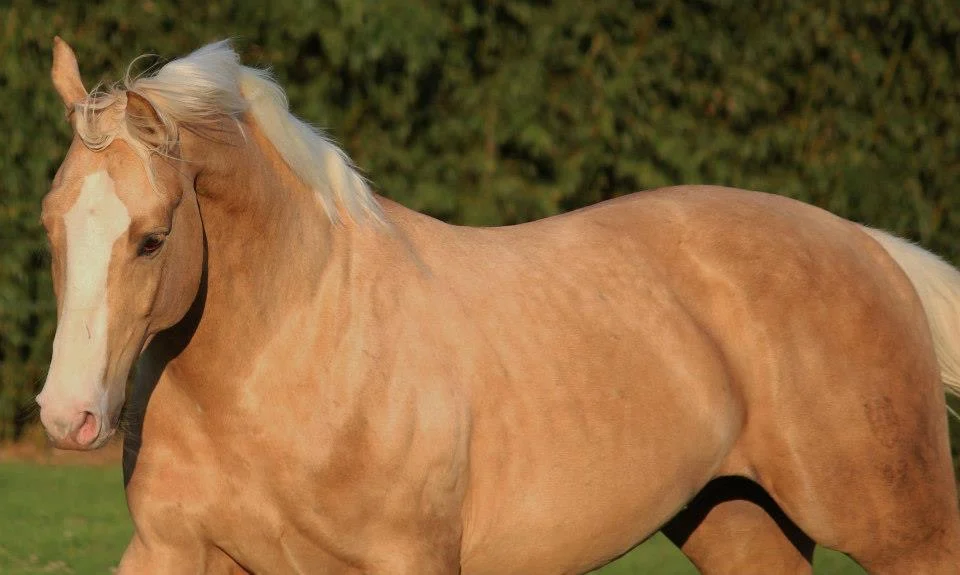
Frequently asked questions
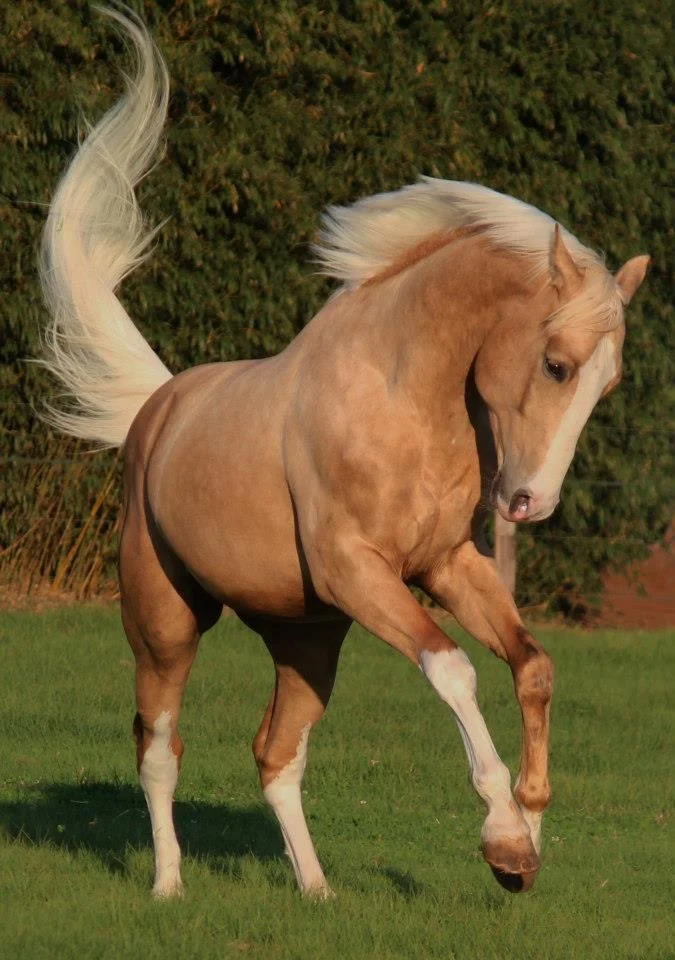
Additional Resources
Trusted Organizations and References:
- American Association of Equine Practitioners (AAEP) – Official guidelines on vaccination and disease control
- World Organisation for Animal Health (WOAH) – Global disease surveillance and outbreak updates
- British Equine Veterinary Association (BEVA) – Research and professional guidance
- Federation Equestre Internationale (FEI) – International competition regulations regarding vaccination requirements
- State/Regional Veterinary Boards – Local outbreak alerts and regulations
- CDC
- Guide to Horse Flu
Professional Publications:
- Equine Veterinary Journal
- The Horse Magazine
- Equine Health Quarterly
- Journal of Equine Veterinary Science
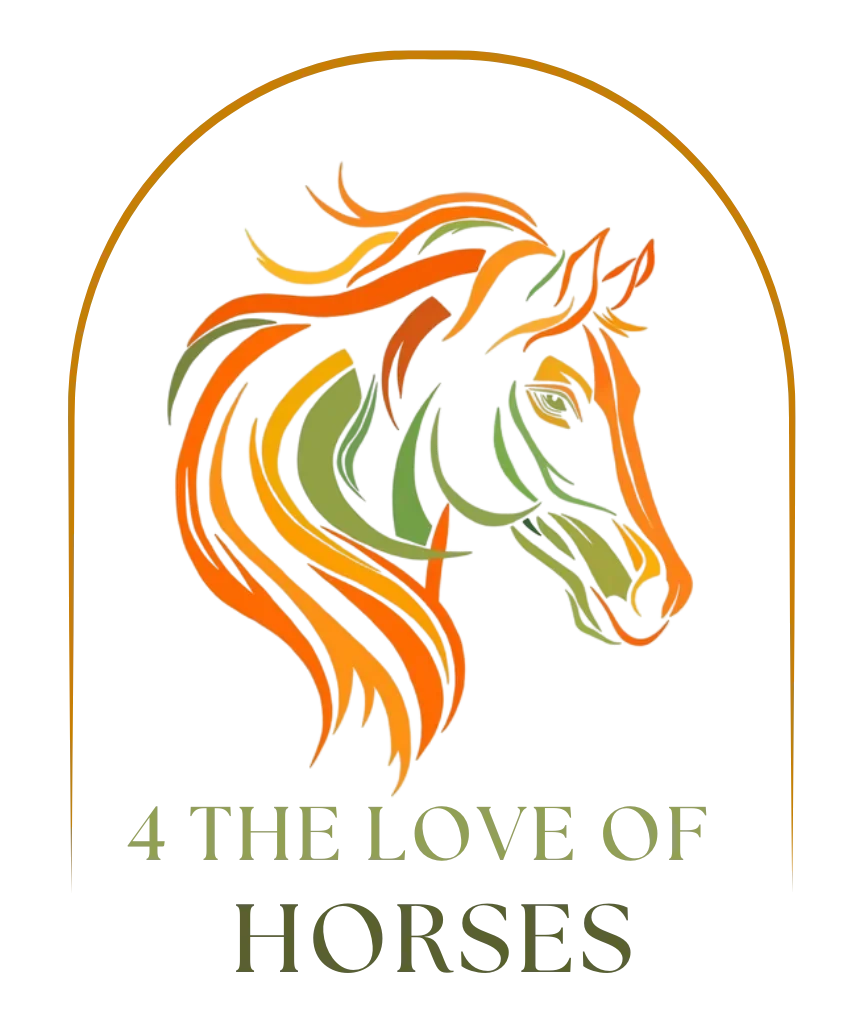
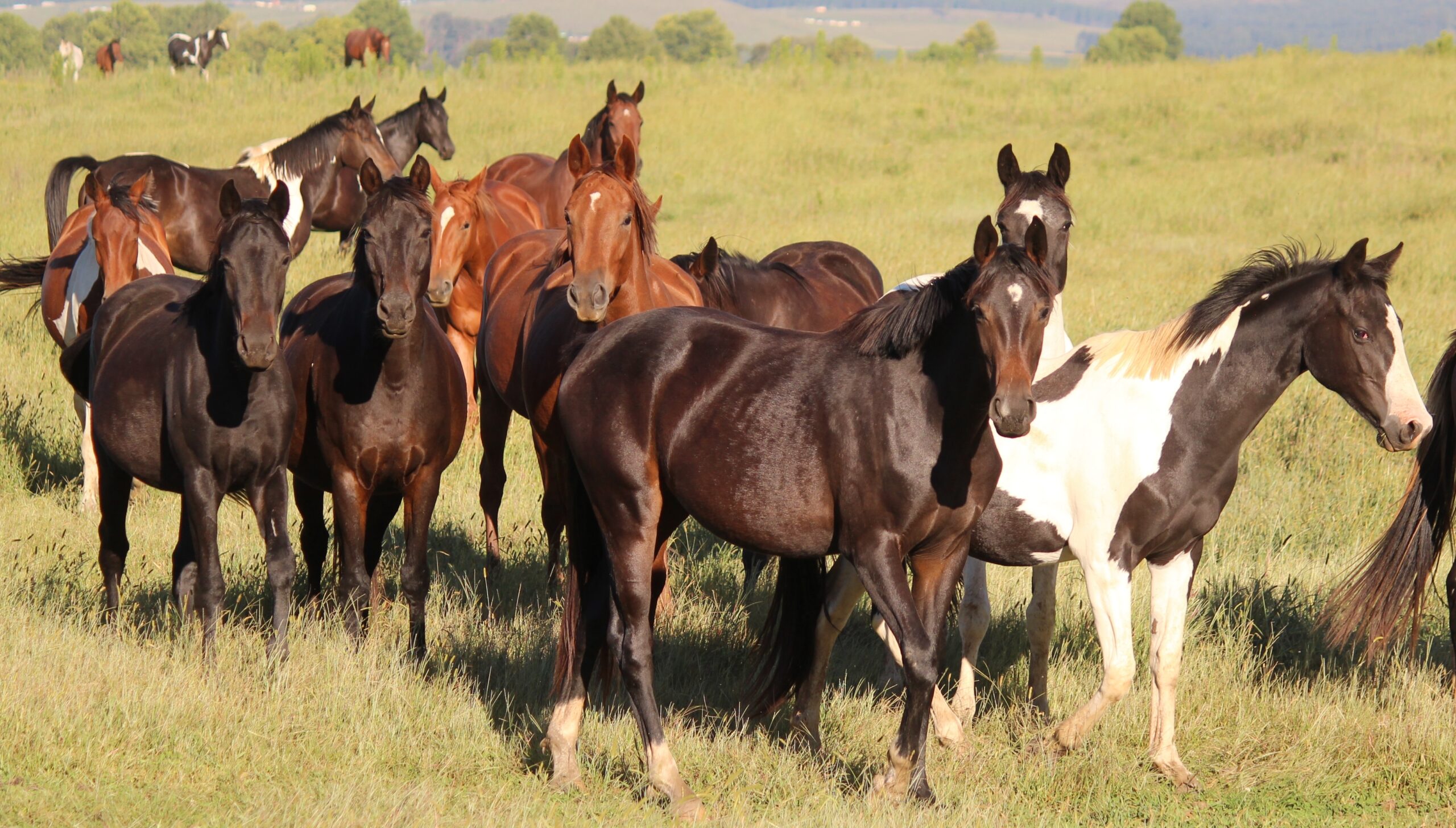
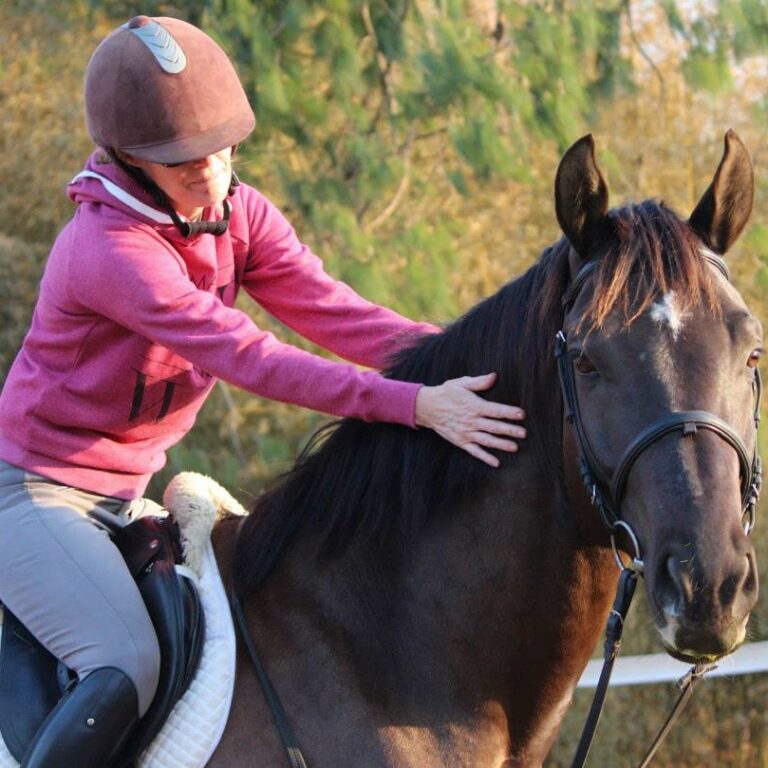
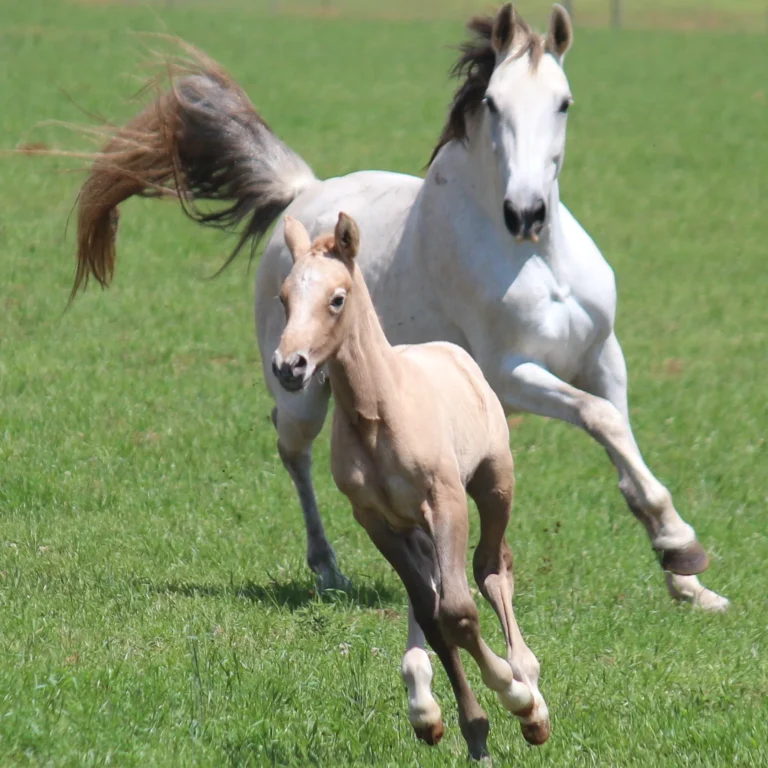
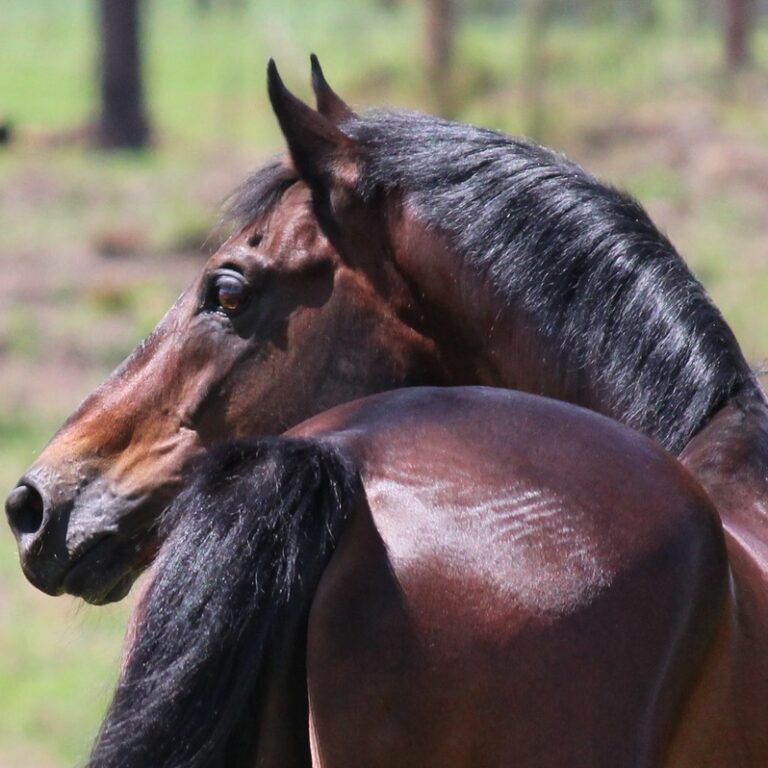
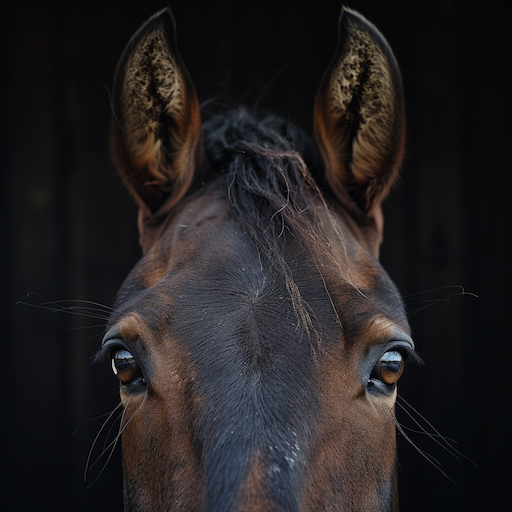
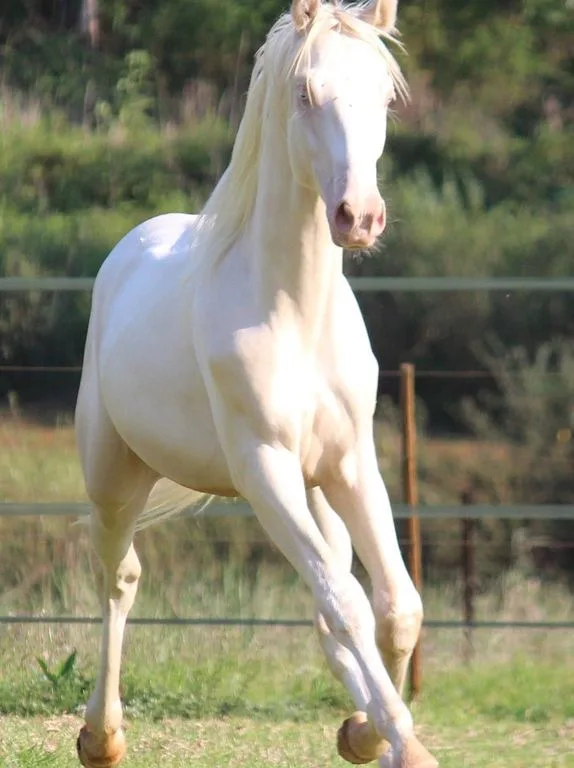
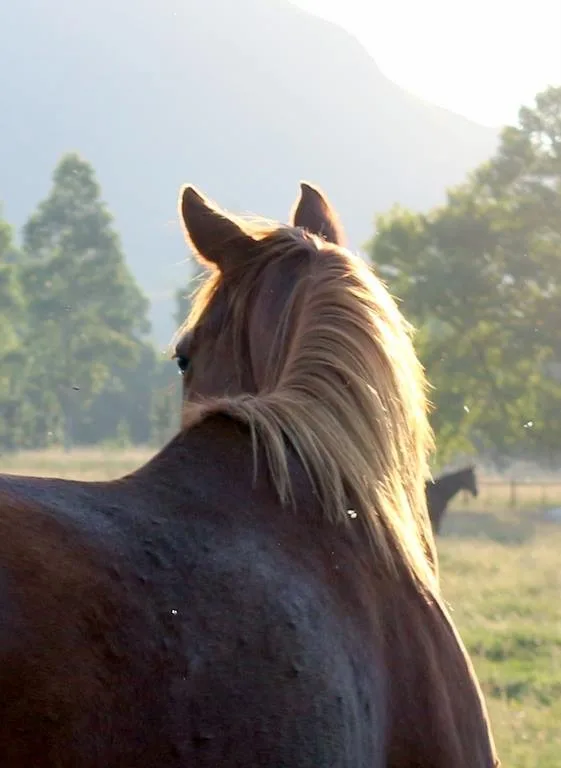
Leave a Reply